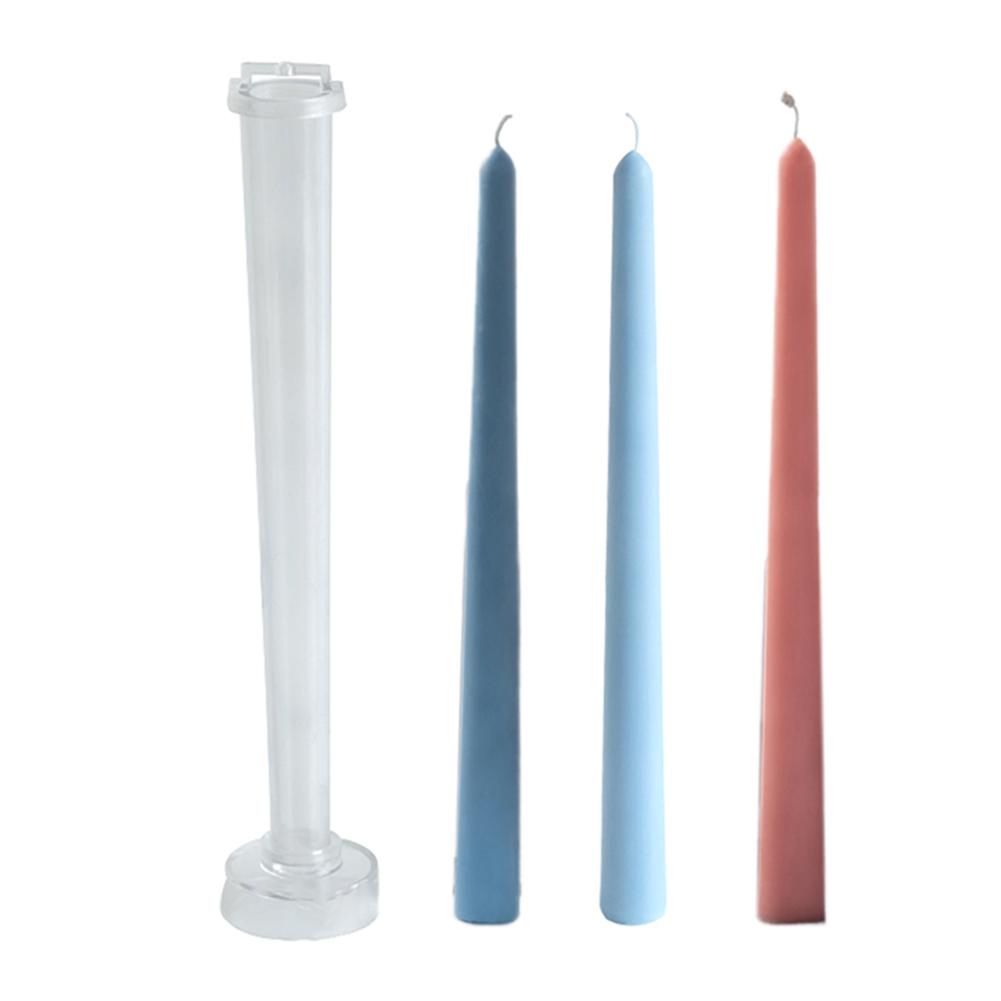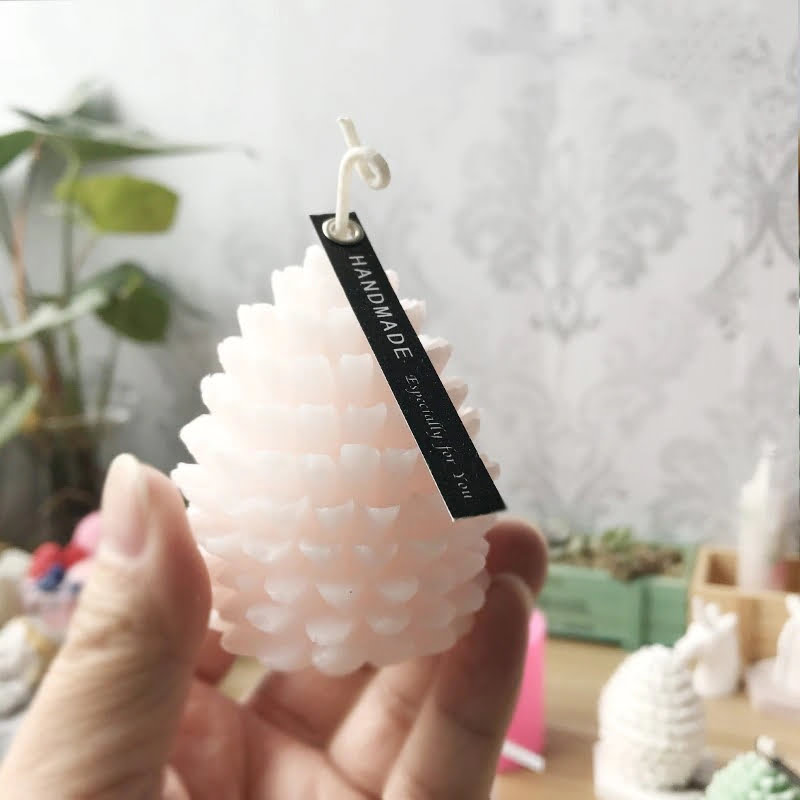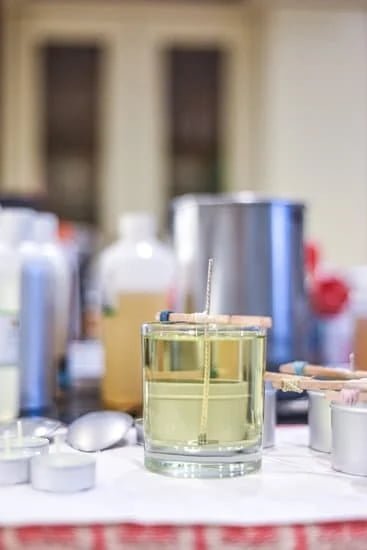Candle making wax is a fundamental component in crafting beautiful and fragrant candles. There are various types of wax available, each with its own unique characteristics that influence the quality and aesthetic of the finished product. In this article, we will delve into the world of different types of candle making wax, exploring their benefits, drawbacks, and individual traits.
When it comes to creating candles, choosing the right type of wax is crucial as it can affect factors such as burn time, scent throw, and appearance. The market offers a wide range of options including paraffin wax, soy wax, beeswax, coconut wax, palm wax, gel wax, and bayberry wax. Each type possesses distinct properties that make them suitable for various candle making projects.
Whether you are a beginner or an experienced candle maker, understanding the differences between these waxes can help you make informed decisions when selecting the most suitable option for your specific needs. From traditional paraffin wax to eco-friendly options like soy and beeswax to specialty waxes like coconut and bayberry, each type brings something unique to the table.
Join us on this journey as we explore the fascinating world of different types of candle making wax and discover which one best suits your creative endeavors.
Overview of Paraffin Wax for Candle Making
Paraffin wax is one of the most common types of candle making wax used in the industry. It is a byproduct of petroleum refining and is known for its affordability and easy accessibility. Paraffin wax is popular among beginner candle makers due to its ease of use and ability to hold color and fragrance well. Additionally, paraffin wax has a relatively high melting point, which helps candles maintain their shape in warmer environments.
Despite its popularity, paraffin wax does have some drawbacks. One major concern is that it is derived from non-renewable resources, making it less environmentally friendly compared to other types of candle making wax. Another downside is that paraffin candles can produce more soot when burned compared to candles made from alternative waxes like soy or beeswax. This can lead to air pollution indoors and may cause respiratory issues for individuals with sensitivities.
While paraffin wax remains a staple in the candle making industry, it’s essential for crafters to consider the environmental impact and potential health concerns associated with using this type of wax. As awareness for sustainable practices continues to grow, many artisans are turning towards eco-friendly alternatives such as soy wax or coconut wax for their candle making projects.
By weighing the benefits and drawbacks of each type of candle making wax, crafters can make informed decisions on which wax best suits their needs and values for their creations.
Benefits and Drawbacks of Soy Wax in Candle Making
Soy wax has become a popular choice among candle makers due to its eco-friendly and natural origins. Made from soybean oil, this type of wax is biodegradable, sustainable, and renewable, making it an environmentally-conscious option for those looking to reduce their carbon footprint. Additionally, soy wax burns cleaner than traditional paraffin wax, producing less soot and toxins when lit. This can be a major selling point for consumers who are concerned about air quality in their homes.
One of the benefits of using soy wax in candle making is its ability to hold onto fragrance oils effectively, resulting in strong scent throw when the candle is burned. This makes it a favorite among those who enjoy heavily scented candles that can fill a room with their enticing aromas. Soy wax also has a slower burning time compared to other types of candle making waxes, allowing for longer-lasting candles that provide hours of enjoyment.
Despite its many advantages, there are some drawbacks to using soy wax in candle making. One common concern is the difficulty in achieving vibrant colors with soy wax candles, as the natural color of the wax can affect the final hue of the candle.
Additionally, soy wax tends to have a softer consistency than other waxes like paraffin, which can make it more prone to dents or damage during shipping and handling. However, with proper care and handling, these challenges can be overcome to create beautiful and sustainable candles for all occasions.
Exploring the Versatility of Beeswax in Candle Making
Beeswax is a natural and versatile type of candle making wax that has been used for centuries. It is a favorite among many candle makers due to its unique properties and benefits. Beeswax candles are known for their clean and long-lasting burn, as well as their natural honey-like aroma when lit. This type of wax is derived from beehives and contains natural color variations, giving each candle a distinctive look.
One of the key advantages of using beeswax in candle making is its environmentally friendly nature. Beeswax is a renewable resource that supports sustainable beekeeping practices. Additionally, beeswax candles do not produce harmful toxins or chemicals when burned, making them safer for indoor use compared to some other types of candles. This makes beeswax an excellent choice for eco-conscious consumers who prioritize sustainability and health.
In addition to its eco-friendly characteristics, beeswax offers practical benefits for candle makers. It has a high melting point, which results in candles that burn slowly and evenly. This means that beeswax candles have a longer burn time compared to those made with other types of wax. Furthermore, beeswax has a natural golden hue that adds warmth and character to the finished candles. Its versatility allows for various creative possibilities in candle design and customization.
| Benefits of Beeswax in Candle Making | Drawbacks of Beeswax in Candle Making |
|---|---|
| Environmentally friendly and sustainable | Higher cost compared to some synthetic waxes |
| Clean burning without toxins or chemicals | May have slight variations in color due to natural sources |
| Longer burn time due to high melting point | Requires higher temperatures for melting and handling |
By exploring the versatility of beeswax in candle making, crafters can enjoy the benefits of this natural wax while creating beautiful and functional candles for personal use or gifting purposes. Whether you are drawn to its eco-friendly qualities, long burn time, or aesthetic appeal, beeswax presents an excellent option for those looking to elevate their candle making projects with a different type of candle making wax.
Unique Qualities of Coconut Wax for Candle Making
Coconut wax has gained popularity as a unique and sustainable option for candle making. This type of candle making wax is derived from the coconut palm tree, known for its versatility in various industries. Coconut wax offers several distinct qualities that set it apart from other types of waxes commonly used in candle making.
One of the key benefits of using coconut wax is its clean-burning properties. When lit, coconut wax candles produce minimal soot, making them ideal for indoor use without worrying about black residue accumulating on walls or ceilings. Additionally, coconut wax has a slower burn time compared to other waxes like soy or paraffin, allowing for a longer-lasting candle that can be enjoyed for extended periods.
Moreover, candles made from coconut wax emit a light and pleasant scent that enhances the ambiance of any space. The natural fragrance of coconut wax candles is subtle yet effective, creating a soothing and calming atmosphere. Due to its high fragrance load capacity, coconut wax can hold essential oils and fragrances exceptionally well, resulting in a more aromatic and long-lasting candle experience.
| Properties | Benefits |
|---|---|
| Clean-burning | Minimal soot production |
| Slow burn time | Long-lasting candles |
| High fragrance load capacity | Enhanced aroma experience |
Comparing Palm Wax vs Soy Wax in Candle Making
When it comes to choosing the right wax for candle making, two popular options that often come up are palm wax and soy wax. Both of these waxes have their own unique qualities and characteristics that make them stand out in the world of candle making.
Palm wax is known for its ability to create beautiful crystalline patterns on candles, giving them a unique and artistic appearance. This type of wax is derived from palm oil, making it a renewable resource.
Palm wax also has a good scent throw, meaning it can hold and release fragrance effectively when used in candles. However, some drawbacks of palm wax include its higher melting point compared to other waxes, which can make it more difficult to work with for some crafters.
On the other hand, soy wax has gained popularity in recent years due to its natural origins and clean-burning properties. Soy wax is made from soybean oil, making it a sustainable option for eco-conscious candle makers. This type of wax also has a lower melting point than palm wax, which makes it easier to work with when making candles. Additionally, soy wax has good scent retention, allowing candles to release fragrance effectively throughout their burn time.
Overall, when deciding between palm wax and soy wax for your candle making projects, it ultimately comes down to personal preference and the specific qualities you are looking for in your candles. Both waxes offer unique benefits and drawbacks that can cater to different preferences and needs in candle making.
Whether you prefer the artistic patterns of palm wax or the clean-burning properties of soy wax, experimenting with each type of candle making wax can help you determine which one suits your projects best.
Delving Into the World of Gel Wax for Candle Making
When it comes to candle making, gel wax is a unique and exciting option that offers a different type of candle making wax compared to traditional options like paraffin or soy. Gel wax is made from a combination of mineral oil and polymer resin, giving it a clear and transparent appearance that allows for creative possibilities in candle design.
Benefits of Using Gel Wax
One of the main benefits of using gel wax in candle making is its ability to hold color and fragrance exceptionally well. Because gel wax is translucent, it can showcase vibrant colors and intricate designs when combined with dyes and embeds. Additionally, gel wax burns longer than traditional waxes, making it a cost-effective choice for creating long-lasting candles.
Drawbacks of Using Gel Wax
While gel wax offers many advantages, there are some drawbacks to consider when using this type of candle making wax. Gel wax has a higher melting point than other waxes, which can make it more challenging to work with during the pouring process.
Additionally, gel candles may require additional care when burning, as the clear nature of the wax can cause overheating if not properly monitored. It is important for candle makers to follow safety guidelines and instructions specific to working with gel wax to ensure successful results.
Using Bayberry Wax for Eco-Friendly Candle Making
Bayberry wax is a unique and sustainable option for eco-friendly candle making. Derived from the berries of the Bayberry shrub, this wax has been used for centuries due to its natural properties and pleasant aroma. It is known for its beautiful green color and subtle fragrance, making it a popular choice among candle makers looking for a more environmentally friendly option.
Benefits of Bayberry Wax
One of the key benefits of using bayberry wax in candle making is its sustainability. The process of harvesting bayberries and extracting wax is relatively low-impact compared to other types of waxes, making it a great choice for environmentally conscious crafters. Additionally, bayberry wax has a clean burn, long-lasting scent throw, and a beautiful natural color that enhances the overall aesthetic appeal of candles.
Drawbacks of Bayberry Wax
While bayberry wax offers many benefits, there are some drawbacks to consider as well. One challenge with using bayberry wax is its higher cost compared to more common waxes like soy or paraffin. This can make it less accessible for beginner candle makers or those on a tight budget. Additionally, bayberry wax can be trickier to work with due to its higher melting point, requiring careful monitoring during the candle making process.
Overall, bayberry wax is an excellent choice for eco-friendly candle making projects. Its sustainable nature, beautiful color, and pleasing aroma make it a favorite among crafters looking to create high-quality candles with minimal environmental impact. Consider incorporating bayberry wax into your next candle making project for a truly unique and sustainable finished product.
Conclusion
In conclusion, the world of candle making wax offers a wide array of options for crafters to choose from when embarking on their projects. Each type of wax, whether it be paraffin, soy, beeswax, coconut, palm, gel, or bayberry wax, comes with its own set of benefits and drawbacks. It ultimately boils down to personal preference and the specific needs of each individual project.
When selecting the right candle making wax for your projects, consider factors such as burn time, scent throw, texture, appearance, and eco-friendliness. Paraffin wax is a popular choice for its affordability and scent throw, while soy wax appeals to those looking for a natural and renewable option. Beeswax offers a unique honey-like aroma and a beautiful natural color, while coconut wax provides a creamy appearance and excellent scent throw.
For those concerned about sustainability and environmental impact, palm wax and bayberry wax are great options for eco-friendly candle making. Gel wax opens up opportunities for creative designs with embedded decorations or objects within the candles. Whatever your preferences may be, experimenting with different types of candle making waxes can lead to discovering new techniques and creating unique candles that suit your style. Choose wisely based on your project goals and enjoy the process of crafting beautiful candles.
Frequently Asked Questions
What Are the Different Types of Candle Wax?
There are several types of candle wax available for candle-making, including paraffin wax, soy wax, beeswax, palm wax, and gel wax. Each type of wax has its own unique characteristics that can affect the candle’s appearance, scent throw, and burn time.
Which Wax Is Best for Candle-Making?
The best wax for candle-making ultimately depends on your preferences and needs. For beginners, soy wax is often recommended for its ease of use and clean-burning properties. Soy wax also has good scent throw capabilities. Beeswax is another popular choice due to its natural origins and sweet aroma when burned.
Can I Use Any Wax to Make Candles?
While you can technically use any type of wax to make candles, it’s important to consider the specific characteristics of each type before deciding which one to use. Some waxes may require different equipment or additives for optimal results.
Additionally, certain waxes may be better suited for specific candle styles or purposes based on their burning qualities and sustainability factors.

Welcome to my candle making blog! In this blog, I will be sharing my tips and tricks for making candles. I will also be sharing some of my favorite recipes.





